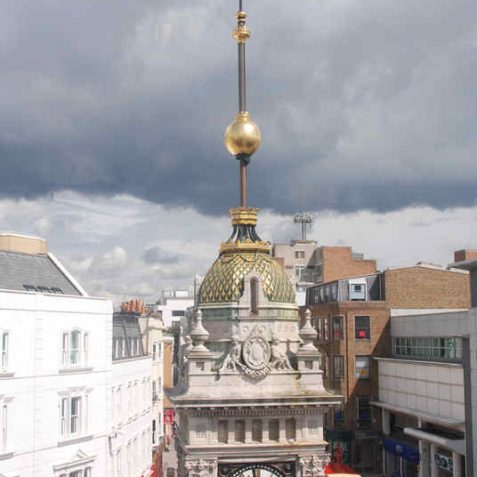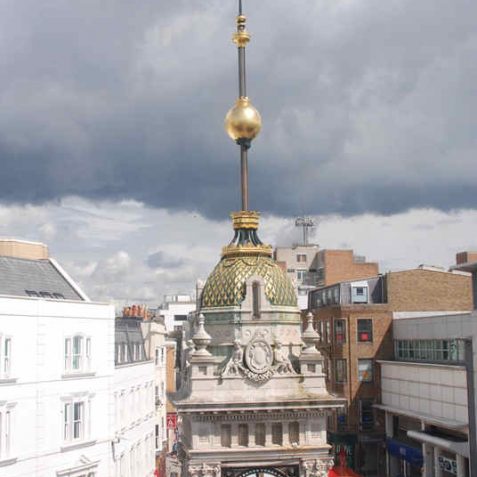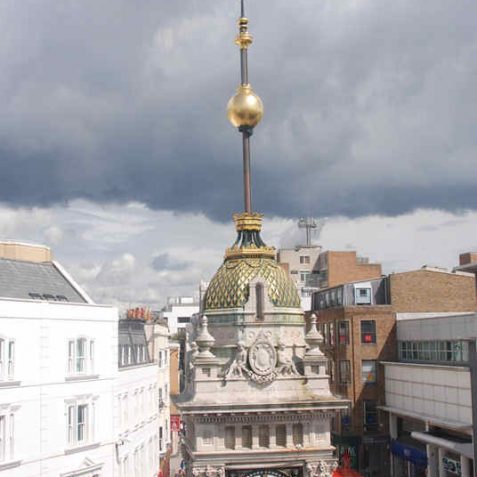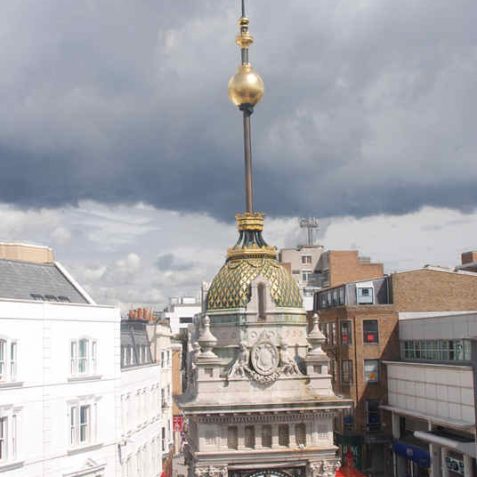Mechanical movements
Brighton’s Jubilee Clock Tower was built, in 1888, to commemorate Queen Victoria’s golden jubilee the previous year. It cost £2,000, and despite architectural criticism, and proposals for removal, it is still a focal point for the city.
Clock watchers
In recent times the Clock Tower and its famous mechanism has been the object of discussion here at My Brighton and Hove. If you look here you will be able to read the comments of clock watchers in its vicinity who have taken great delight in charting the movements of its famous gilt copper sphere. This time ball, one of Magnus Volk’s inventions, was designed to rise hydraulically up the mast and then fall down on the hour. Unfortunately the mechanism made a lot of noise and was the subject of complaints. There were even worries that the foundations of the Clock Tower were at risk from the vibrations.
A nostalgic reminder
Today, refurbished and resplendent, the Clock Tower is a nostalgic reminder of days gone by, and stands aloof from the rush of the modern day city which streams around it. As to the famous gilt copper sphere, there are many who doubt that it does actually move. To prove the point, we dispatched our trusty volunteer photographer, who positioned himself, to catch the event. So for all those who did not believe it – here is the proof – and remember, the camera never lies!
Editor’s note
It seems that not all our visitors took us at our word that our trusty volunteer photographer had successfully shown that the Clock Tower ball mechanism does actually work. So – with thanks to Waterstone’s book shop at the Clock Tower, who allowed our photographer to camp out waiting – we bring you more photos. These are real – undoctored – unprocessed. The Clock Tower golden ball is indeed ‘alive’ and well – honest!










Comments about this page
The camera may never lie; a doubtful assertion. When was the photo taken, and when, if ever, does the mechanism work?
Hi Geoff,
The pics were taken on the 11th July this year, however I have been back and taken better shots which the Editors are in the process of publishing at the moment. The ball takes roughly 60 secs to rise and the same to return back. I know for a fact that the mechanism works at twelve o’clock and two o’clock.
My grandfather, born in 1895, told me that he had been told that the ball rose slowly over each hour, indicating from a great distance the quarter, half and three-quarters divisions of the hour, only to descend rapidly shortly after the hour. True or false?
This truly is captivating!
I never truly believed the mechanism (old or reconditioned) was still working! It would be great if someone could identify at exactly what times the ball rises and falls daily (if it rises and falls daily at the same time), as currently it all claims seems to be based on conjecture. Magnus Volk would be so pleased that even after all this time his design is being spoken about and investigated with such passion!
Sorry, it’s only taken me two years and ten months to reply to Vernon, but I believe the ball did rise slowly to indicate the quarter hours and drop rapidly on the hour. Or so I’ve been told, I wasn’t actually around when it originally worked.
Add a comment about this page